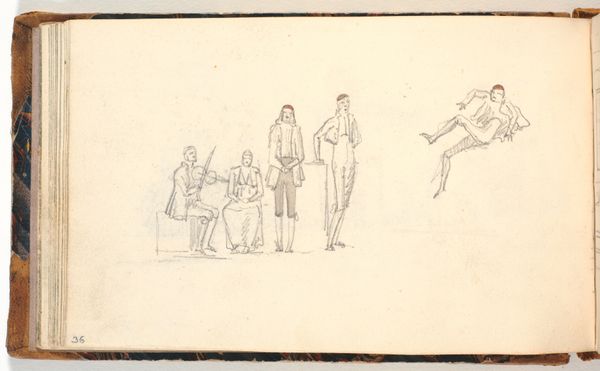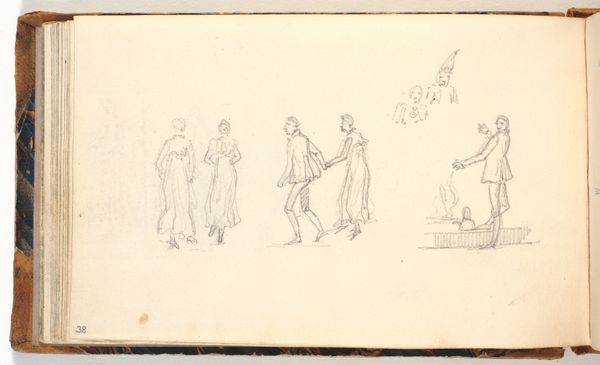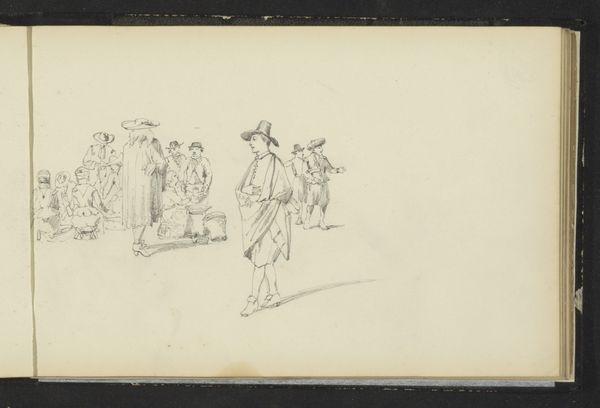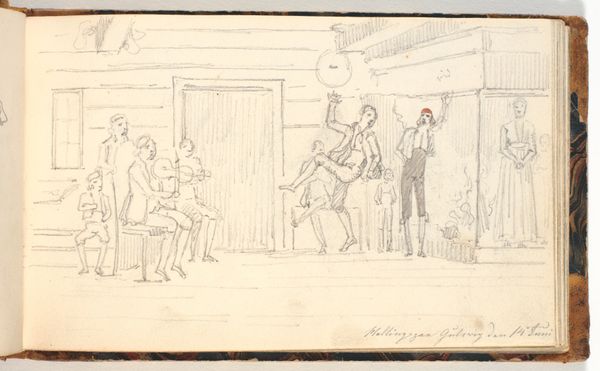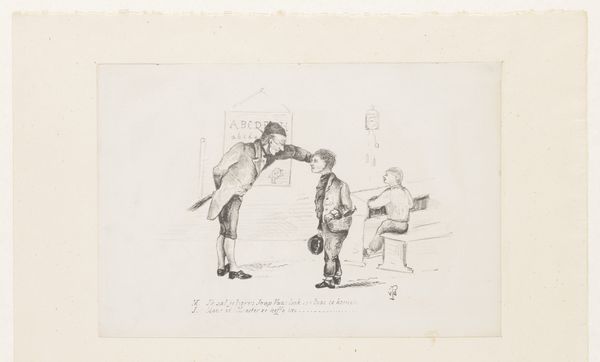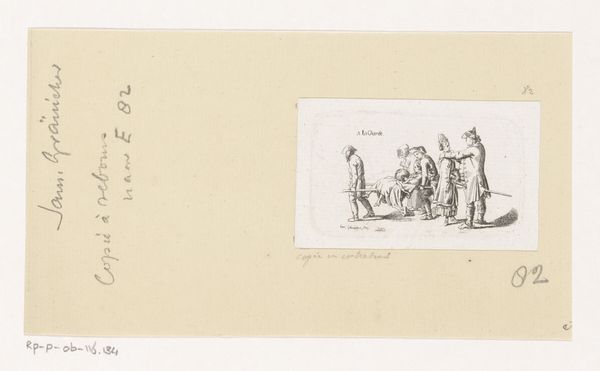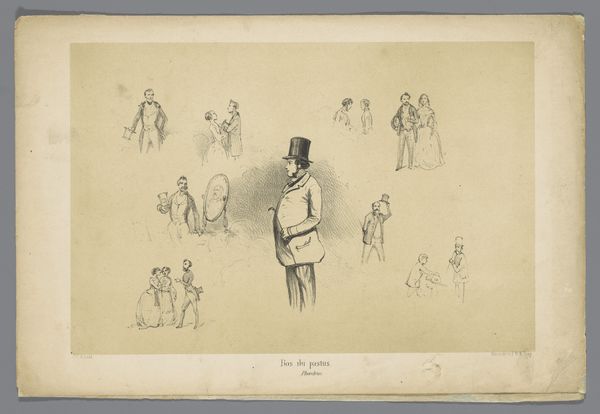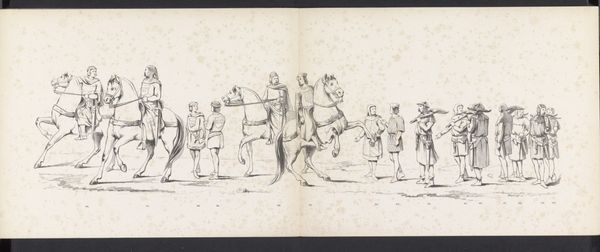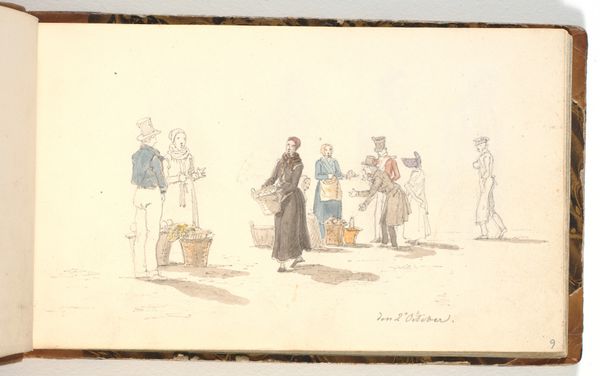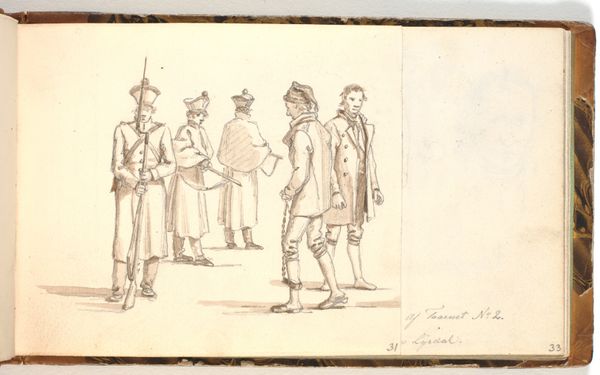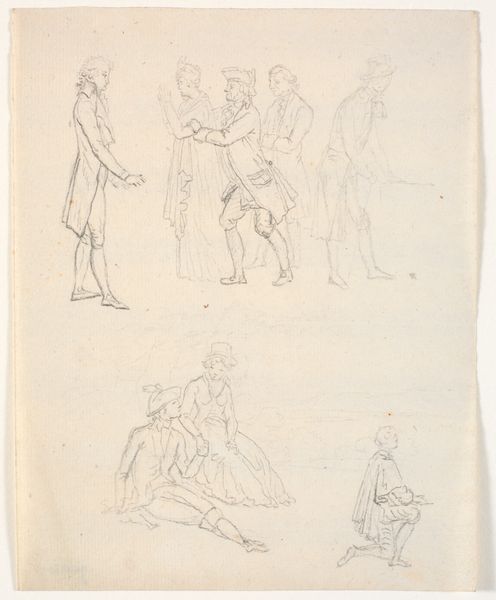
drawing, paper, pencil
#
drawing
#
narrative-art
#
figuration
#
paper
#
romanticism
#
pencil
Dimensions: 107 mm (height) x 179 mm (width) (bladmaal)
Curator: This delicate pencil drawing, titled "Figurgrupper" and created by Martinus Rørbye in 1832, offers a glimpse into a seemingly casual moment captured on paper. Editor: It feels so fleeting. A quick sketch, almost ethereal. Look at the subtle use of line; the artist really prioritizes suggestion over description, there are almost a ghost figures to the left there. Curator: Precisely. Rørbye, associated with the Danish Golden Age of painting and the Romantic movement, often focused on scenes from everyday life and travel. The placement of figures here reminds one of groupings one might see on the Italian plazas depicted at that time, so common among painters and those acquiring "The Grand Tour". The drawing provides insight into the cultural themes prevalent at the time. Editor: But how was this image created and how does it represent what these people in the image really looked like? Was this to remember their existence or to profit and showcase this person? Also, how does paper like this influence the medium and the reception? It has that very particular smoothness from its make, and there appears to be age on it, what kind of statements and class does this materiality evoke for you? Curator: Those are relevant questions! To be direct though, a lot of these elements of style like paper smoothness were determined at that time by their relation to the state, wealth and status; who received supplies and how much the person who acquired it had to use, to spare, to show off. Think about the influence that has to that individual who is making art and wants to become renown for making these styles of art! Editor: And the artistic style! It certainly affects how we perceive not only the content of the art piece but how the context of its labor and art history have produced it! Curator: Undoubtedly! The composition directs us towards certain assumptions, a quiet atmosphere—like we are intruding in someone's private thoughts or a page in their diary. Editor: Indeed. And in these pencil lines, we can explore how class structure affects our ability to experience our perception of romantic art in this period and consider these subjects and those who make them as active contributors and participants, rather than viewers of it. Curator: Considering all we have discussed, seeing Rørbye’s drawing allows us a deeper, broader, reflection on this romantic period, Editor: Definitely. The intersection of materiality and social history is essential in assessing "Figurgrupper".
Comments
No comments
Be the first to comment and join the conversation on the ultimate creative platform.
